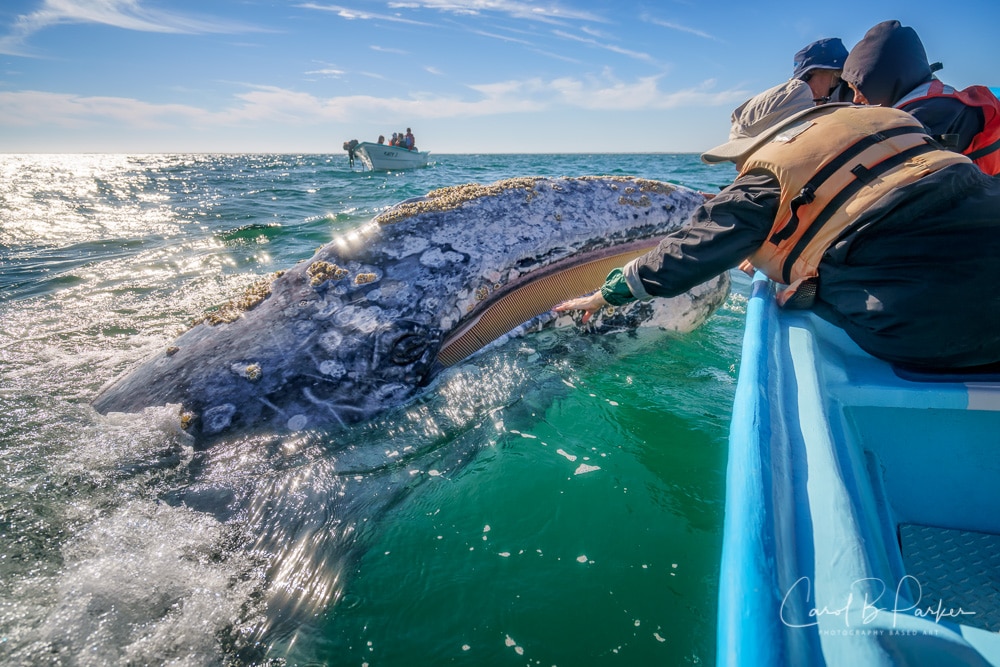So many people have no clue about an amazing phenomenon that takes place every winter in Baja Mexico.
Gray whales migrate south every year in the fall, swimming some 12,500 miles down the Pacific Coast from their summer feeding grounds in the Arctic to their calving and breeding grounds in the warm protected waters of shallow lagoons in Mexico. Beginning in the 1970s or so, the whales of their own volition began to interact with humans.
Imagine the reaction of that first Mexican fisherman, Pachico Mayoral, who was fishing in his small open boat on the lagoon waters when he was approached by a huge gray whale that explored the small craft, going from side to side, until Mayoral was brave enough to reach down and touch it. And nothing happened. The whale stayed calm.
An entire ecotourism industry has sprung up devoted to introducing humans to whales – touching, petting, even kissing these wild whales! Let me know if you’d like an referral for the awesome tour group that hosted us in San Ignacio Lagoon. Peak season for whale watching is February and March. Our group camped in tents beside the lagoon, watched the whales cruise by our vantage point overlooking the water while the setting sun lit up the sky, voyaged out on the water in pangas (traditional Mexican small open fishing boats) to interact with the whales, and on the last day when a massive storm flooded the entire camp and washed out the local airport, we enjoyed a well-orchestrated impromptu adventure through remote Baja countryside in search of transportation home.
When we visited in February the juveniles were the ones that interacted most with the boats: five, six and seven year old young whales that delighted in gliding along the hull while excited whale watchers leaned over to touch them as they passed by. They opened their mouths, inviting us to touch their tongues. They rolled on their sides to peer up at us with a large intelligent eye. They would sink below the hull and pop up on the other side, teasing us. Then with the flick of a tail the young whales would race over to another nearby boat to flirt with those whale watchers in turn. Later in the season the protective mothers of the current crop of newborns would relax their guard and bring the babies to the boats, introducing their offspring to the interesting phenomenon of humans floating on top of the water in tiny floating shells.
What intrigues me the most is how their behavior has evolved through history. In the 19th century, the whaling industry discovered these nursery lagoons. The whalers cut off the entrances, trapping and slaughtering their quarry literally to the point of extinction. In self defense the whales became fiercely aggressive, earning the designation of ‘devil fish’ as they attacked their tormentors, smashing the boats with their tails or breaching out of the water on top of them. How, as the decades passed, did they revert from aggression to the charming playfulness they now display?
Since whaling days, gray whales have rebounded from the precarious edge of extinction. From a population decimated down to only 100 animals, in today’s world they number some 26,000.
[envira-gallery id=”9079″]




